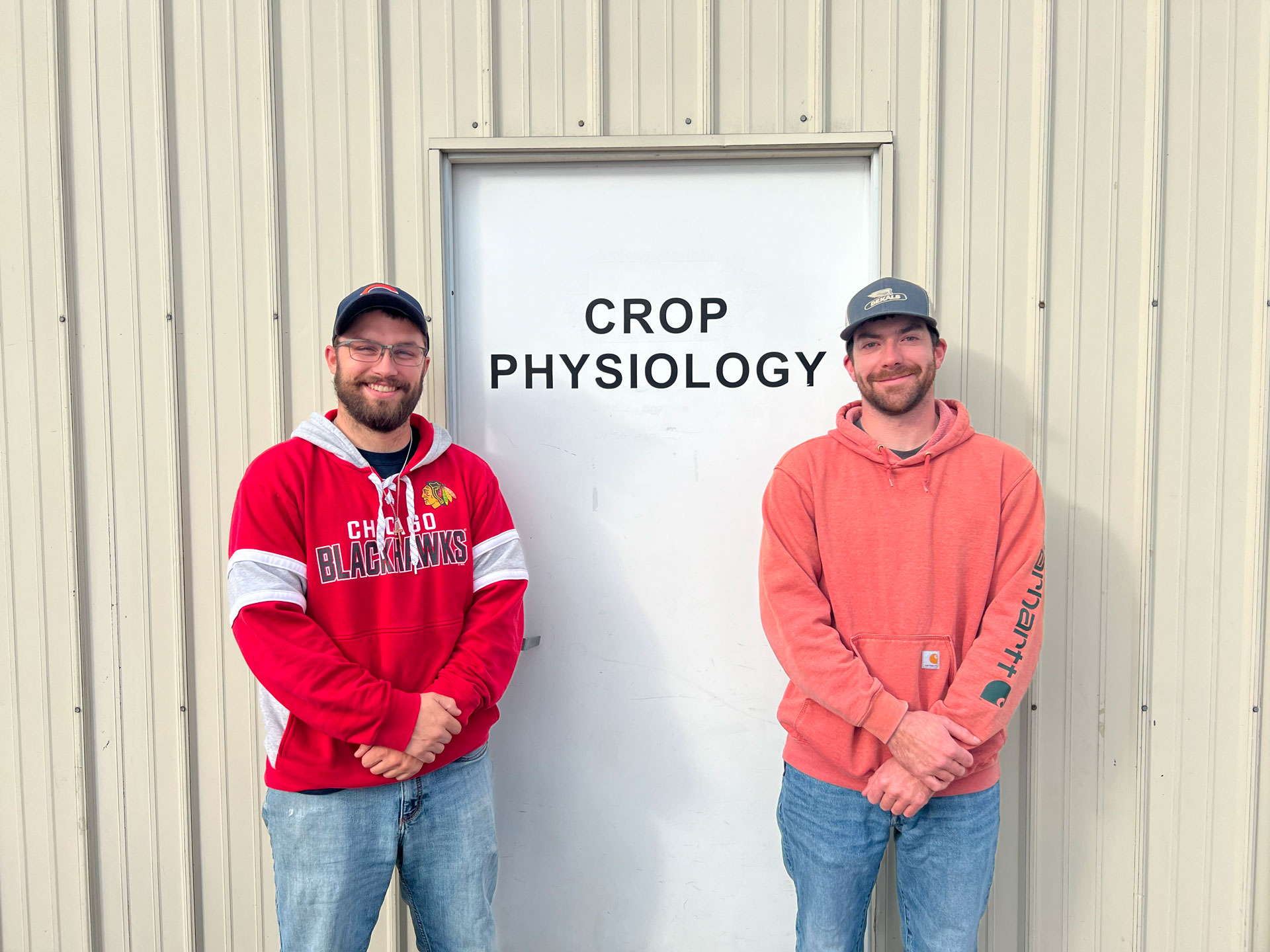For the last year – despite the myriads of weather conditions – seven graduate students at University of Illinois Urbana–Champaign were on an odyssey to achieve the highest yield possible, by nearly whatever means possible.
Well, the bushels are in the bin, the numbers have been tallied and the winner – or winners – are here. Devin Koester and Jared Fender tied for first at around 282 bu/ac.
“I think one of the biggest things that the students learned this year was just how many options a farmer has — different products, different placements, things like that. So, while it’s cool to compete for the highest yield, it’s also a good way to gain an appreciation for everything a farmer’s pressured with,” said Dr. Connor Sible, a research assistant professor at UIUC Crop Sciences.
Koester, a weed scientist by trade, came ready to learn from his peers and discover the impact that weed pressure can have on yield, and if these effects differ in a low- vs. high-input systems production.
During the course of his project, he applied a dry-drop fertilizer around V6 containing sulfur, potash and MicroEssentials® SZ — a practice gleaned from another grad student, Gabriela Frigo Fernandes.
“I walked the entire row and dry-dropped right at the base of the plant, so when we got rain — which came two days later, thankfully — I put up quite a bit of sulfur,” said Koester. “I put up 43lbs of sulfur at V6 knowing that the plant would want it later in the season and that once it got into the soil, it was going to stay right at the roots.”
At V6, Koester also Y-dropped nitrogen and foliar sprayed other micronutrient fertilizers along with a biological activator and a drift reductant to further feed nutrients near the roots of his crop.
“I did all that to get the plant excited to push for those high yields,” said Koester. “Then, I didn’t touch it for a while. I let nature take its course because I didn’t want to over-manage it.”
Then, around V12, Koester applied the crop’s first fungicide and insecticide. With that pass, he also applied a foliar application with nitrogen, sulfur, boron, manganese, zinc and potassium.
“I wanted to start setting up my crop to make those big, big kernels,” Koester said.
He went back around R2 with another foliar feed, fungicide and fertilizer to give the crop a final push.
“This was a lot of fun. I’m really happy and really proud of what I did,” said Koester. “I come from a farming background but the last time my family did row crops was 2012, but it’s something I want in my future. This was an opportunity to try my hand at it.”
Koester knows his award-winning yield wasn’t won without high-management practices, which may seem extreme for some but are growing in popularity.
“At the end of the day, yes you have to make yield, but you also have to make dollars. I know this management was over the top, but I know producers that are going into these high-management type systems, so to be able to understand the thought process that goes on throughout the season is an asset for me.”
Jared Fender started this year with a placement-by-timing study to uncover how different timing of application practices affect the uptake and utilization of nutrients. The foundation of his research began with his hybrid selection. He picked his hybrid carefully, then made his game plan catered to what he knew about his chosen variety.
“We all started with really high pre-plant fertility with MicroEssentials® SZ, so what mattered most from there was choosing my hybrid,” Fender said.
His trial was planted later than he hoped, but he was prepared, knowing how his hybrid tended to power through the vegetative stage, sacrificing stalk quality. This caused him to lose about 10% of his crop to green snap, but that didn’t slow him or his crop down.
“The bigger you are, the harder you fall, so I did a lot of the pre-plant applications then came back in at around V5 and V6 — which is a key point in the corn growing season — and side dressed about 14 nutrients including nitrogen, phosphorus, potassium and copper. I especially was trying to feed boron early to increase reproduction later.”
Fender came back in at V12, right before the reproduction phases, and made the same application as before, this time, increasing his nitrogen application. About two weeks after that fertility application, he applied his first and only fungicide and insecticide.
“I didn’t soil test. I didn’t tissue test. I mapped out my key micronutrients and key application times to ensure I applied what the plant needed, and it was in an available form before it needed it, not a week after,” he said.
In the end, Fender’s spoon-feeding approach to nutrient timing paid off, despite the challenges of later-than-desired planting. By strategically timing his nutrient applications and closely tailoring his plan to fit his chosen hybrid, he maximized the uptake and utilization of nutrients which subsequently turned into yield potential.
“There was a lot of learning done by everybody in this trial this year. Everyone learned their lessons on timing, rates and products, so I think the next year is going to be a lot bigger and better for most,” Fender said.
Now that the bushels are in the bin, the graduate students are combing through their data and already planning and plotting how to achieve the title of next year’s Yield Odyssey champion.
